If you’re looking for a mid-90s laptop with built-in gamepad buttons, CD-ROM, Floppy Drive, and a Sound Blaster-compatible sound card, the SAGER 5200PT is right for you.
There is very little information about this machine online, however I am familiar with SAGER and how they operate. SAGER/Clevo is a company that assembles custom high-end laptops, usually for an appropriately high-end price. I know somebody that ordered a SAGER laptop in 1999 (at a cost of roughly $4,000), and it came with a built-in DVD player, FireWire, and a few other features that were fairly unheard of in a laptop of that era. Unfortunately, due to the custom nature of these laptops, researching any particular model number can be a real hassle.
The 5200PT’s most distinguished feature is the gamepad buttons which are built into the palmrest (similar to the modern GPD Win I got a few years ago):
However, the premium features of this laptop (apparently manufactured in January 1997) don’t stop there. There’s also an active-matrix TFT LCD (in an era when dual-scans were still somewhat popular), a dedicated joystick/MIDI port, configurable built-in Sound Blaster support, the previously mentioned 8x CD-ROM drive, and a lot of nice extra touches, such as a fanfare that plays when you boot it up (similar to the ThinkPad 860).
The screen resolution is 800×600, which may actually be considered detrimental nowadays, where many people want a 640×480 laptop for DOS gaming without ugly stretching. Fortunately, 640×480 looks fairly nice on this laptop; even with stretching disabled, you don’t have too big of a black border around your picture. The gamepad buttons function similar to a built-in joystick (DOOM had no issue recognizing it when I selected Joystick control).
YouTube video by “Action Retro”: https://www.youtube.com/watch?v=HXor-r8-AN8
Revised on April 12, 2025


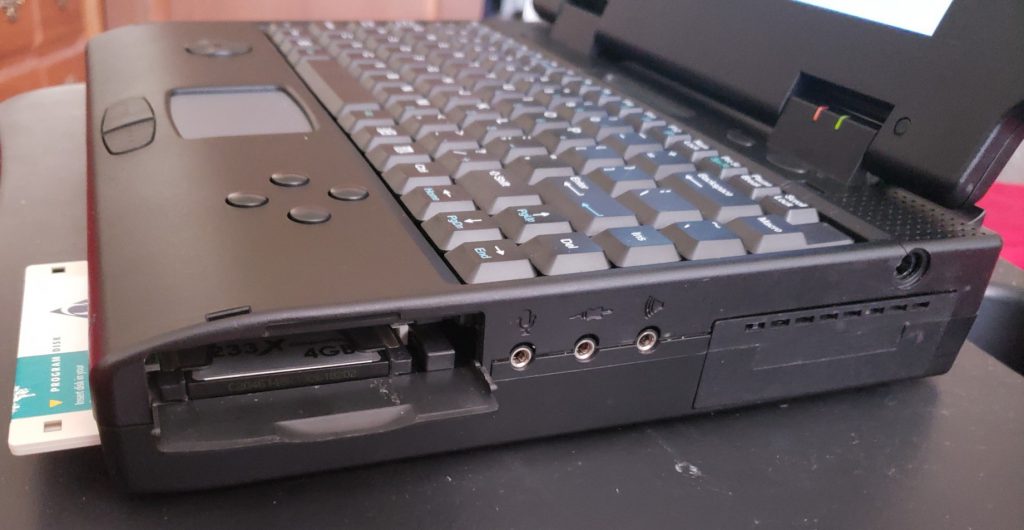
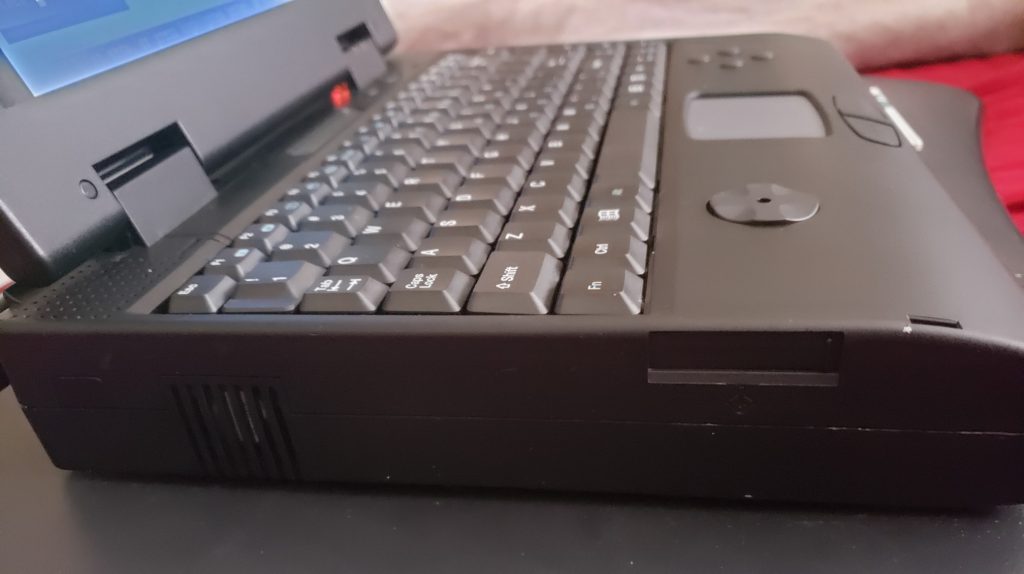


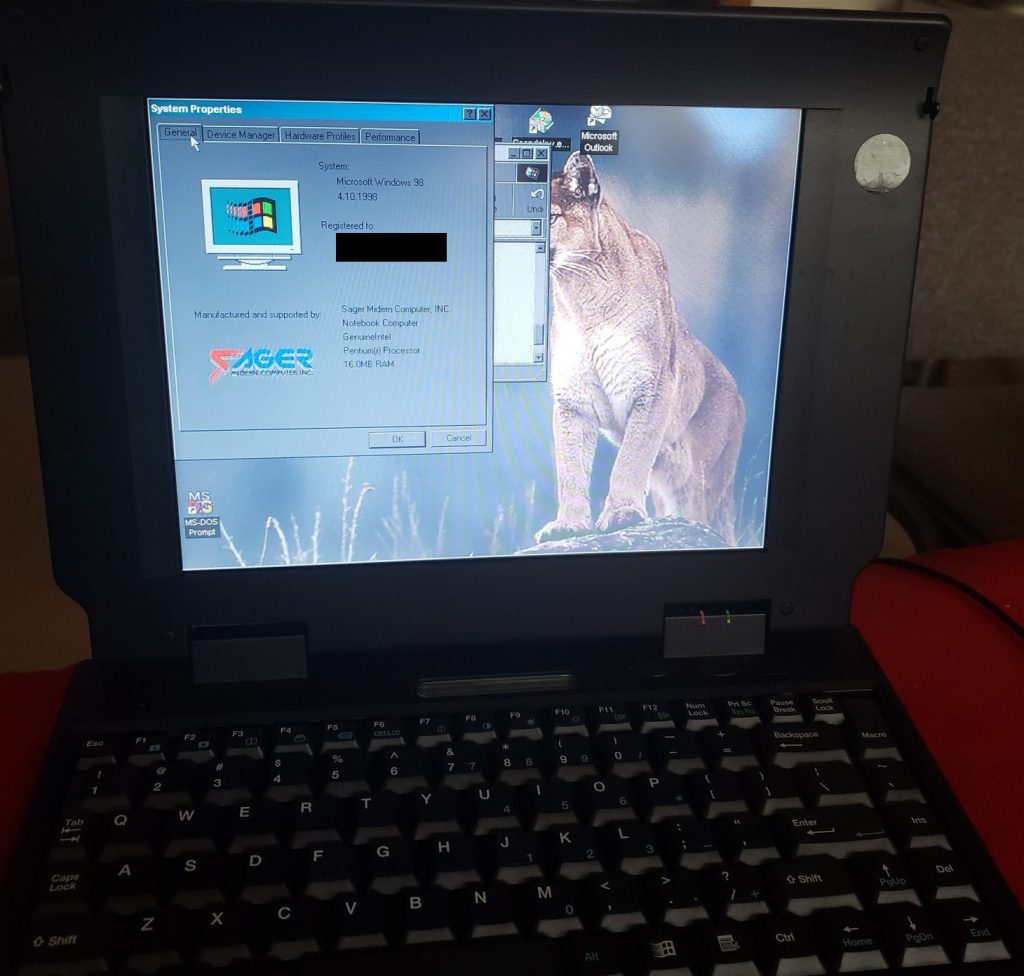
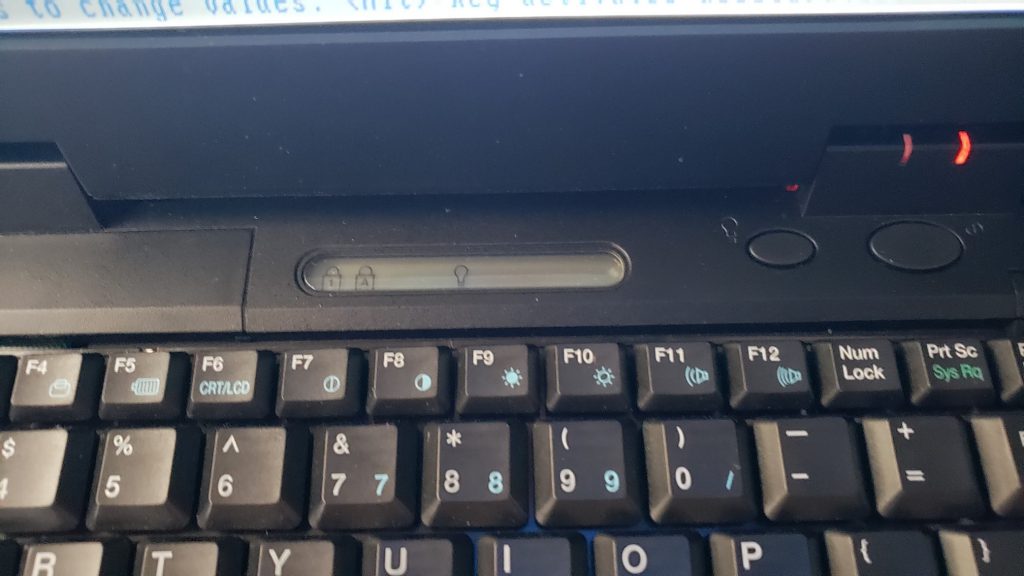

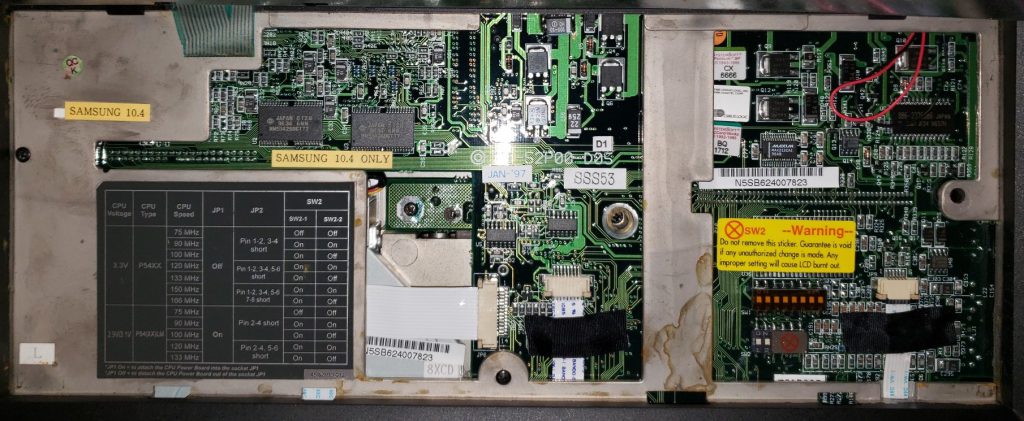
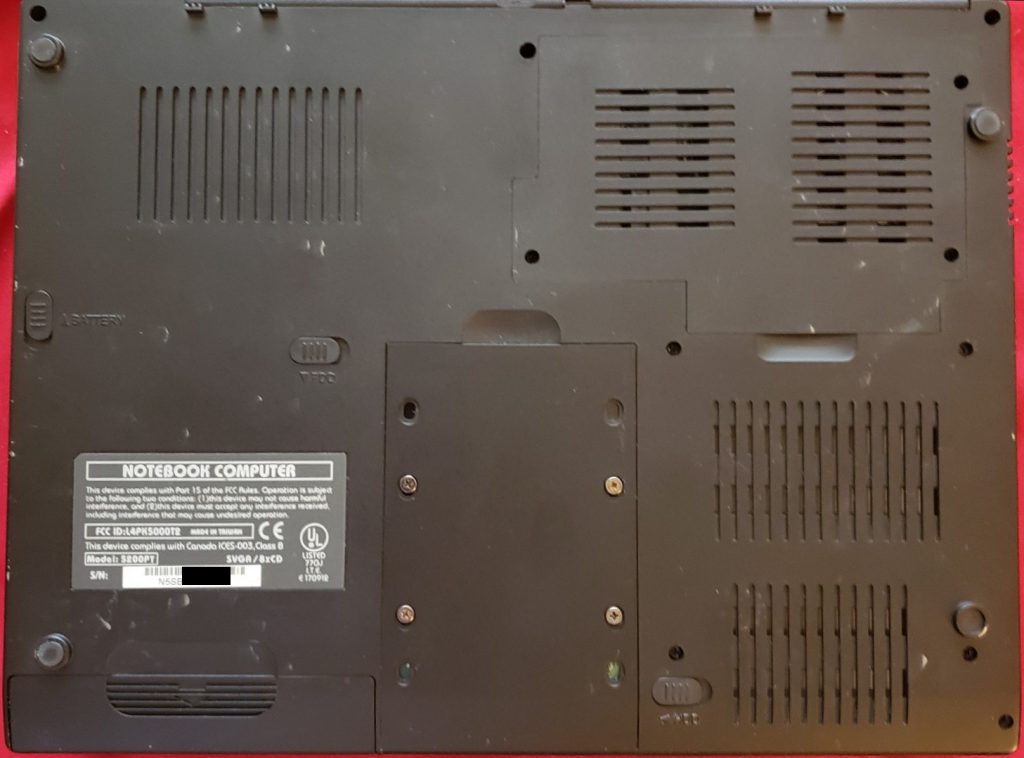
Curious about the ergonomics of using that gamepad, since they’re on the palm rest and I could picture having to grab the laptop by both edges to use it. I imagine the buttons are clicky? Overall a neat find. All the experimentation around this time was nifty and most of it’s been long forgotten.
Please. Could you take a picture of the processor under the hood??
I have the same laptop and I don’t have JP1. apparently lost him.
I just checked, and I also don’t have anything plugged into JP1 (under the RAM cover, by the CPU). I believe it was just used to configure upgrades, probably done at the factory.
Hey mate,
I just stumbled upon your post but I had no idea there were more of these machines in the wild. I recently got my hands on one and now I’m looking for drivers and software for it. The original HDD died so anything that was on there is now gone. If you could get the drivers/software and possibly the OEMINFO out, I’d greatly appreciate it.
You’re in luck – the original HDD is intact! Here is the OEMINFO: http://laptop.pics/5200PT-OEMINFO.zip
As for drivers and special programs, I don’t see any, surprisingly. The gamepad shows up as a standard joystick, even in pure MS-DOS games. Everything else is taken care of by the built-in drivers in Windows 98 SE.
Thanks Jack,
I appreciate you getting back to me so quickly as well as sending me the OEMINFO. So fun fact, my model is slightly older than yours. Mine only has a Pentium 120 MHz with 16 MB RAM and a 6X CD-ROM. I still have the TFT Active Matrix screen and the 2 MB Cirrus Logic video card. The original HDD supposedly came with Win95 installed but I’m having very little luck getting the sound card to work. I think mine might have an ESS 1788 or 1878 but I have no way of knowing.
Thanks for the OEMINFO!
I have the same laptop. The power turns on but no left green light and no video. Pretty sure it doesnt boot in an os since I dont hear any sounds, but the fan turns on and I can insert and remove a cd. I also hear the cd spin.
I am going to start doing some troubleshooting, but wanted to ask you if your computer turns on without the battery. Mine doesnt have one.
It’s important to note that the green light is just the “battery full” indicator. The actual “power on” indicator is the light bulb icon in the very small LCD window above the keyboard. When you turn on, does anything show up there for you? (Mine runs properly even without the battery installed.)
Otherwise, it could be faulty RAM, which would prevent a POST from starting (not sure how SystemSoft BIOS beep codes work). Alternatively, it could be a bad internal screen, which you could test by plugging in an external VGA monitor.
Certain laptops from this era won’t even begin to POST without a working hard drive (Toshiba Libretto) or even a working clock battery (Mitsubishi Amity), but I don’t believe the SAGERs behave like that.
Thanks, yes the light bulb indicator is displayed and the hard drive icon flashes for a second. I took it a part today and found out that it reacts the same even when the hard drive and ram is removed (minus the hard drive indicator). It only stops working completely when you disconnect the ram board from the motherboard, which makes sense especially since I believe the cpu is on the same board as the ram.
As an aside, the machine is very diy friendly.It only uses two different size screws and no hidden (easy to break cables).
For now I ordered new to me ram for around $10 each with shipping. Might as well upgrade to 32mb.
If that doesnt work I will try a new hard drive, but not familiar with the drive type inside. Do you know what term I would use to find a replacement by chance?
If that fails me then I will purchase the ram/cpu? board, which I found online for $9.99.
Last is the $35 motherboard. One way or another I am hoping to fix this thing. I find it a facinating little device and yearn to play on win95 again.
Fortunately, the hard drive is a standard 2.5″ IDE (44-pin). On this laptop, it screws into a caddy (with a proprietary adapter), which then slides into the bottom of the laptop. In my post’s picture of the laptop’s underside, you can see this caddy in the lower-middle.
I pulled the hard drive today and connected it to my modern machine via an IDE to USB adapter and it appears the hard drive is in working order. I went ahead and cloned it to a 32 gb Compact Flash drive that I have an IDE adapter for, so may end up using that in the computer when I get it up and running. Will let you know if the ram solves the issue.
Hi,
What’s the voltage of the charger brick? I have the same laptop but sadly without the power brick.
The charger I use is 16 Volts, Center-Positive.